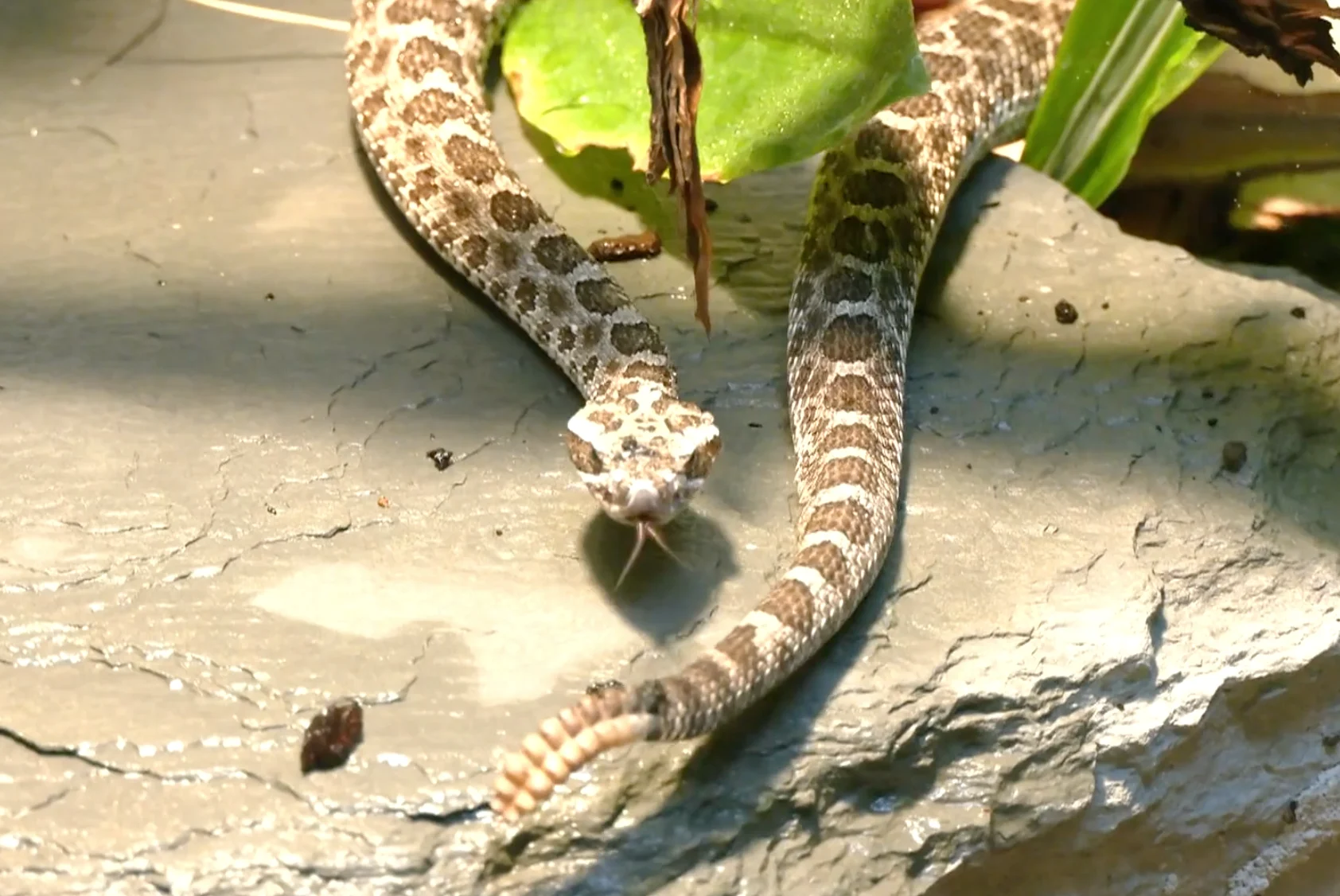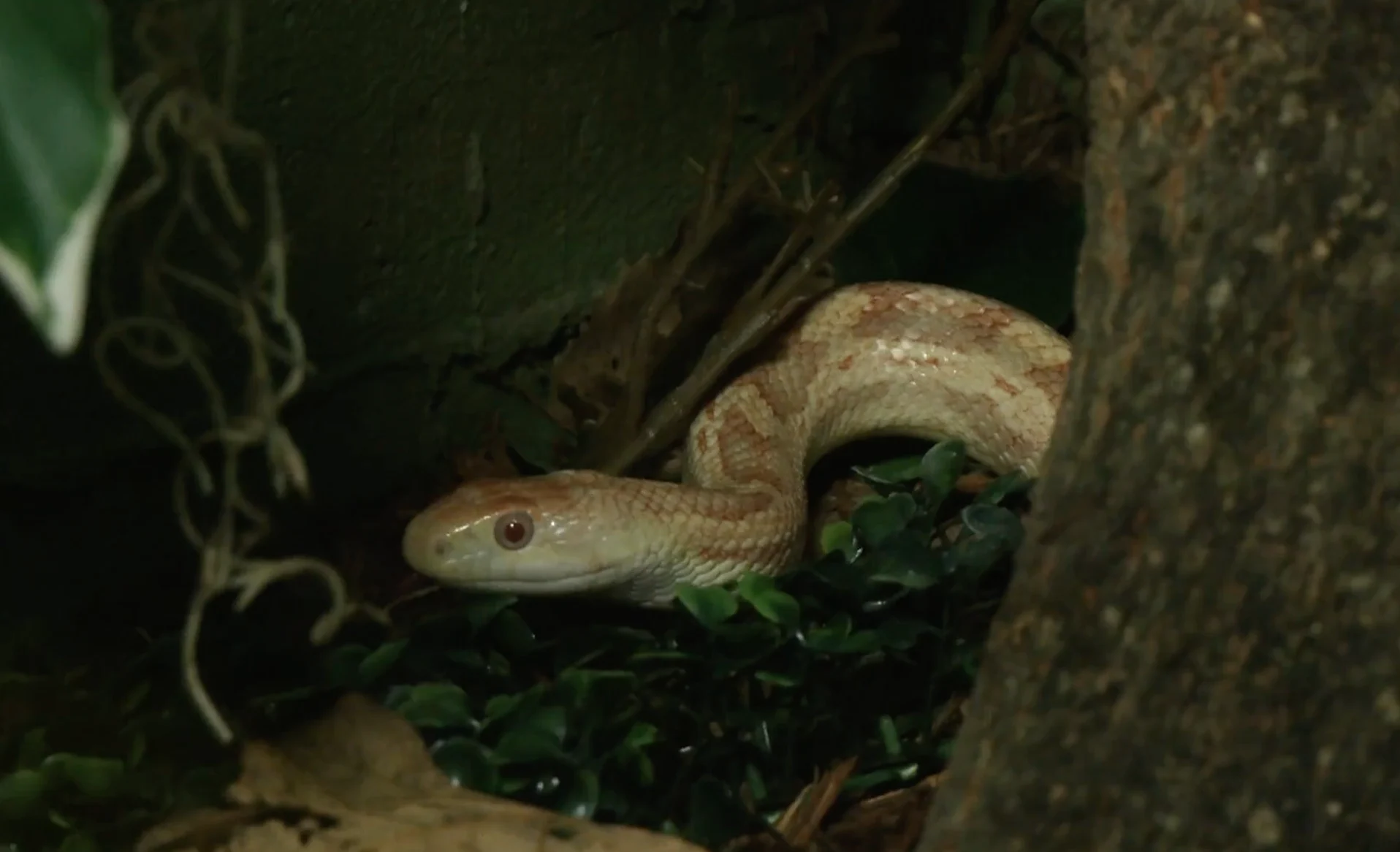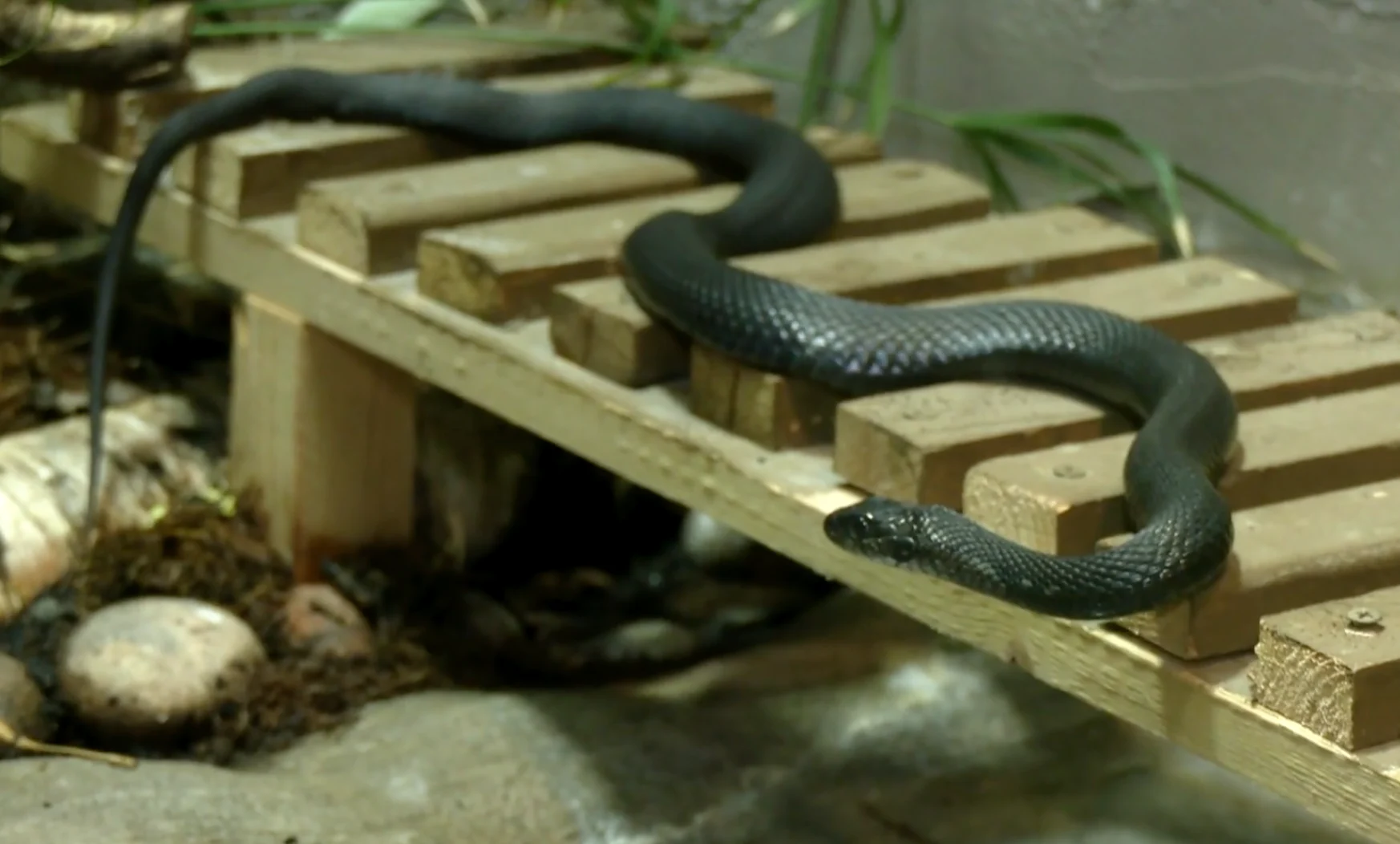
Should Ontario snakes be feared? Get to know the various types slithering around
'None of them want to be harmful to people; they're not looking for us to hurt us in any way."
As a journalist, sometimes you have to face your fears to tell a story. Having had a phobia of snakes my whole life, the last thing I ever thought I’d do was report on a species I am the most scared of. But should snakes really be this feared? I faced my nightmare, learning from Reptilia’s Zookeeper and Engagement Coordinator, Ashley Maika.
Of the 17 species of snakes found in Ontario, there’s only one that is truly venomous: the Eastern Massasauga Rattlesnake.
Primarily found along the eastern side of Georgian Bay and on the Bruce Peninsula, this snake uses a toxin to overpower its prey. Maika explains that the toxin is also dangerous if a person or pet is bitten by it. Looking through a glass window at this snake, I instantly had a pit in my stomach.
“Having said that, no one has actually died from a Massasauga bite in over 50 years,” Maika reassured me.

Eastern Massasauga Rattlesnake (Victoria Fenn Alvarado/The Weather Network)
Although this should have eased my mind, the fear persisted. I was shocked to find that this snake was the smallest in size and looked the least threatening compared to other non-threatening snakes in the facility.
The largest snake found in Ontario is the ratsnake. While Maika held the long constrictor in her hands, she offered me the opportunity to touch it. As panic set in, I figured this was my opportunity to step out of my comfort zone. I quickly grazed the snake, which can grow up to two metres in length.

Albino black ratsnake (Victoria Fenn Alvarado/The Weather Network)
SEE ALSO: Eyes out for Ontario's only venomous snake
As I cringed, Maika taught me that the rat snake is at risk in Ontario. They can often be found on the pavement, trying to bask.
“If you do find them across the road, just like turtles, it's always good to break for them and let them get across, especially as the warmer months come up,” she explained.
While my fear persisted, I felt at ease learning that they serve an important purpose.
“They keep a lot of pest populations down, which means they also keep diseases from spreading because if they're eating a lot of rodents, rodents are often spreading diseases to other animals, including us,” Maika added.
I shrieked, giving it another go and touching the next one. The garter snake is one of the most commonly found snakes in Ontario. As I tried my best to keep calm, Maika told me, “They actually do have venom.”

Garter snake (Victoria Fenn Alvarado/The Weather Network)
SEE ALSO: These alarmingly large snakes are more common than you may realize in Ontario
This was not what I wanted to hear at the moment, but she clarified by explaining that “the venom from them is not going to affect people. They mainly eat slugs and frogs.”
Maika did her best to relieve my stress by elaborating, “When they’re scared, the first thing they’re going to do is musk, not bite. They're creating a really icky odour that tries to make them unappetizing to other animals.”
There are many different variations of snake species that you may come across in Ontario. Generally, if you find one in the wild, it’s best to leave them be. I, for one, hope to never be near one again.
I asked Maika to give me a reason why I should get over this phobia, and she replied, “They have a long body, they have no ears, and they don't blink. They don't do anything that we really do. And because we can't find something to connect with, we are often scared of the unknown.”
“We have a lot of trouble picking up on behavioural similarities for snakes, and that's usually when we have fears, when we just don't understand,” she continued.
Perhaps it is the wide, open eyes and slithering bodies that I cannot connect with. But, with more knowledge and understanding, I feel relieved knowing that they aren’t actually out to hurt anyone. I can honestly say that my phobia is still there, but now I can proclaim the words I never thought I'd ever say: “I touched a snake... and survived.”











